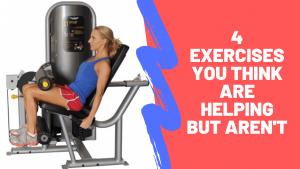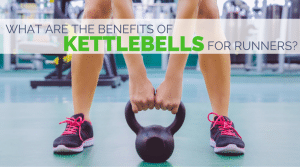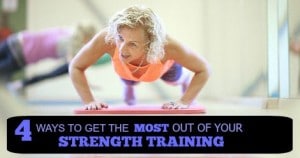
The Science
Average hip strength in runners
Niemuth et al., looked at hip strength in runners visiting an orthopedic clinic for injuries. Thirty runners who had various hip and leg injuries had their hip strength tested in all six directions of motion. Compared to a control group of recreational runners, the injured runners had weaker hip flexors and hip abductors on the injured side, while their adductors were stronger on the injured side. The healthy runners displayed no side-to-side differences in muscular strength. Interestingly, despite the influence of muscle strength imbalances, no relationship was found between the injured side and the runners’ dominant leg.Hip strength and runner’s knee
Another more specific study by Ireland et al. in 2003 found similar results. Like the previous study, hip strength was evaluated fifteen women with patellofemoral joint pain (often known colloquially as “runner’s knee”), and compared with age-matched control subjects. Again, the injured runners had weaker hip abductors as well as weaker hip external rotators on their injured leg compared to a control group. Regrettably, this study did not measure hip strength in the healthy leg on the injured runners, nor did it examine hip flexor or adductor strength. Nevertheless, it is an important confirmation of Niemuth et al.’s findings. Interestingly, Niemuth and colleagues themselves published a follow-up study on the same subject—female athletes with patellofemoral joint pain—in 2007. Using a better designed procedure and taking more rigorous measurements, they did find a difference:Injured women in the study were weaker on their injured side, as well as being weaker overall in measures of five of the six major hip muscle groups compared to healthy runners (the only one which was not was hip adduction).
Hip strength and IT band syndrome
An older study with a more innovative approach was conducted by Michael Fredericson and his coworkers at Stanford University in 2000. In this study, the injured runners all had been diagnosed with iliotibial band (IT band) syndrome. Like the two previous studies, Fredericson et al. found a significant difference in hip abductor strength between the 24 injured subjects and healthy controls. However, this study went one step further: it followed the subjects through a six-week gluteus medius strengthening program. The gluteus medius is the main hip abductor and external rotator, and is implicated in hip abduction weakness.All but two of the injured runners were able to return to training after the six-week hip strengthening program concluded.
Of course, it’s hard to blindly follow this study for showing the importance of hip strength exercises, as there was no control group!Limitations
These studies are very promising, but they all have a similar weakness: they are retrospective, meaning they only look at runners after they get injured. It is possible—though in my opinion, unlikely—that getting injured results in a loss of hip abduction strength. The jury’s still out on whether improving hip strength will prevent injury, but there is good circumstantial evidence, and most orthopedic doctors would highly recommend it. It might be a while before we have a good prospective study on the preventative effects of hip strength exercises, since these types of studies are quite hard to do: You have to recruit a large number of people, measure their hip strength, then ensure that half of them do an acceptable routine of hip strength exercises daily and that half do not. There are not too many runners out there who are willing to delay their own running injuries to be part of an experiment!What you can do to improve hip strength
Fortunately, it’s pretty easy to strengthen your hip abductors and external rotators. The three most common exercises prescribed are the side leg lift, the “clam” leg lift, and the lateral band walk, illustrated below: Side Leg Lift Banded ClamshellsLateral Band Walks Most rehab protocols call for these hip exercises to be done on a daily basis for one to three sets of 15 to 30 repeats—usually building up over time as your strength increases.
The Science
Average hip strength in runners
Niemuth et al., looked at hip strength in runners visiting an orthopedic clinic for injuries. Thirty runners who had various hip and leg injuries had their hip strength tested in all six directions of motion. Compared to a control group of recreational runners, the injured runners had weaker hip flexors and hip abductors on the injured side, while their adductors were stronger on the injured side. The healthy runners displayed no side-to-side differences in muscular strength. Interestingly, despite the influence of muscle strength imbalances, no relationship was found between the injured side and the runners’ dominant leg.Hip strength and runner’s knee
Another more specific study by Ireland et al. in 2003 found similar results. Like the previous study, hip strength was evaluated fifteen women with patellofemoral joint pain (often known colloquially as “runner’s knee”), and compared with age-matched control subjects. Again, the injured runners had weaker hip abductors as well as weaker hip external rotators on their injured leg compared to a control group. Regrettably, this study did not measure hip strength in the healthy leg on the injured runners, nor did it examine hip flexor or adductor strength. Nevertheless, it is an important confirmation of Niemuth et al.’s findings. Interestingly, Niemuth and colleagues themselves published a follow-up study on the same subject—female athletes with patellofemoral joint pain—in 2007. Using a better designed procedure and taking more rigorous measurements, they did find a difference:Injured women in the study were weaker on their injured side, as well as being weaker overall in measures of five of the six major hip muscle groups compared to healthy runners (the only one which was not was hip adduction).
Hip strength and IT band syndrome
An older study with a more innovative approach was conducted by Michael Fredericson and his coworkers at Stanford University in 2000. In this study, the injured runners all had been diagnosed with iliotibial band (IT band) syndrome. Like the two previous studies, Fredericson et al. found a significant difference in hip abductor strength between the 24 injured subjects and healthy controls. However, this study went one step further: it followed the subjects through a six-week gluteus medius strengthening program. The gluteus medius is the main hip abductor and external rotator, and is implicated in hip abduction weakness.All but two of the injured runners were able to return to training after the six-week hip strengthening program concluded.
Of course, it’s hard to blindly follow this study for showing the importance of hip strength exercises, as there was no control group!Limitations
These studies are very promising, but they all have a similar weakness: they are retrospective, meaning they only look at runners after they get injured. It is possible—though in my opinion, unlikely—that getting injured results in a loss of hip abduction strength. The jury’s still out on whether improving hip strength will prevent injury, but there is good circumstantial evidence, and most orthopedic doctors would highly recommend it. It might be a while before we have a good prospective study on the preventative effects of hip strength exercises, since these types of studies are quite hard to do: You have to recruit a large number of people, measure their hip strength, then ensure that half of them do an acceptable routine of hip strength exercises daily and that half do not. There are not too many runners out there who are willing to delay their own running injuries to be part of an experiment!What you can do to improve hip strength
Fortunately, it’s pretty easy to strengthen your hip abductors and external rotators. The three most common exercises prescribed are the side leg lift, the “clam” leg lift, and the lateral band walk, illustrated below: Side Leg Lift Banded ClamshellsLateral Band Walks Most rehab protocols call for these hip exercises to be done on a daily basis for one to three sets of 15 to 30 repeats—usually building up over time as your strength increases.RunnersConnect Bonus
Download your FREE Hip Strengthening Exercises Guide.
Download a video version of the 5 most effective hip exercises for runners. You’ll get full descriptions on how to perform and a video to help guide you.



 <
<





13 Responses
I was on my way to running a half-marathon and then on a Saturday (typically my longer runs 5-8 miles) After the run, I began to have low back, radiating around my right hip and into the groin and it’s affected my right knew. MRI showed a small disc bulge which i was told by the ortho shouldn’t cause these symptoms. 1 dr said its my SI. Bottom line I’m still in pain and have only ran a couple of 5ks since April 2012. I cannot run more than 1-2 miles due to low back back pain (right quadrant) Any advice would be much appreciated. I desperately want to return to running ASAP 🙂 Thank you.
Hi all.. Every time I play basketball I have knee pain ie runners knee.. I recently joined a gym and part of my workout include hip strengthening exercises. I started playing basketball and my knee pain is gone. It’s just sore but during the game I can run 100%. The hip exercises have definitely helped. Cheers
Hip weakness has contributed greatly to a series of running injuries in my left foot: PF, peroneal tendonitis, and most recently, posterior tibial tendonitis. I’ve been working on strengthening my left glutes, but my sports doc said today that I’m still having issues not because of my glutes, but because my left hip is much weaker than my right. The hip strengthening article you posted above is really helpful – my sports doc has given me several of those exercises to do to bring my left hip up to speed.
I find this very interesting. While training for a marathon last year I started having major foot pain mainly in the heel area of my left foot. My coach said I just needed to ice and trigger point. No relief. I went to see a massage therapist. She was surprised at how tight my right hip was. I went to the doctor. He confirmed Plantar Fascittis and gave me a steroid injection. No relief. I really think my left foot pain is related to my tight right hip. Is that possible being on the opposite side of the body?
Alice – our whole running system is interconnected, and I would guess that pain in one side could be due to the body trying to compensate for weaknesses somewhere else. I would try these hip exercises along with lateral band walk (rubber band on ankles, and crab walk) along with one legged squat and one legged dead lift. Major strength builders.
This is a fantastic short but comprehensive article on hip tendonitis. I am so impressed about how it takes an evidence-based approach.
This article was very helpful. I am going to try these tips out as I too have hip pain and am just starting to run, I am going to try these strengthening exercises and see if these help.
Glad you found it useful Johanna! Let us know how you get on 🙂
I have been experiencing hip problems for long. The pain is sustainable but bearable. I can run 6-7 miles once in a week and shorter running for 3 days a week. It feels an excruciating pain after the run but 2 days rest makes it easier again.
Is it a serious issue or with time things will be normalized. I want to run half marathon but with this pain it seems quite tough.